Case Study Overview
Youngchan (YC) Lee of Samsung presented a case study on Samsung’s hierarchical clock domain crossing sign off methodology using Real Intent Meridian CDC.
Problem Statement
Samsung was previously using a traditional flat clock domain crossing (CDC) methodology to sign off. However, it was impacting chip schedules as their designers were struggling to complete CDC sign off in a reasonable time. The challenges were primarily due to:
- The volume of top-level violations
- Top level designers did not understand intricate details of the lower level IP sufficiently to sign off on them
Samsung noticed that several large IP blocks were at the root cause of a large number of violations. The IP blocks were used repeatedly across multiple SoCs.
They identified that a hierarchical clock domain crossing sign off methodology using Real Intent’s Meridian CDC would help them to resolve this challenge.
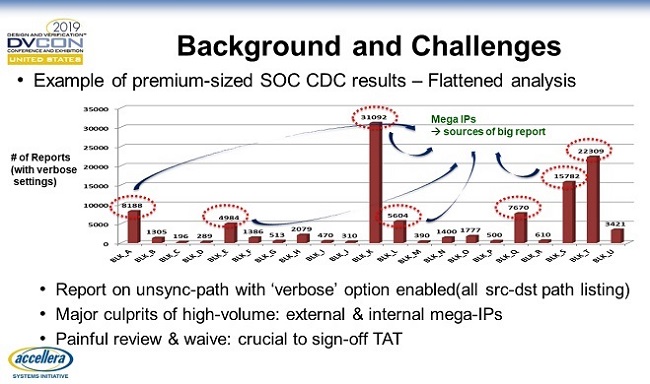
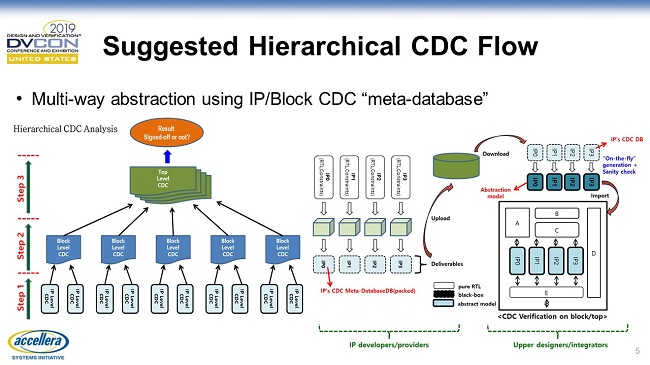
Three-Step CDC Sign-off Methodology
Samsung established a three-level clock domain crossing sign-off flow for their IP and the full SoC.
- The IP is signed off on Meridian CDC and then Meridian’s CDC meta-database is checked into the IP management system.
- The IP meta-database created in step 1 is used for CDC sign-off of the next-level (multiple-IP) blocks. The CDC meta-database is also checked into the IP management system.
- The IP and next-level block CDC metadata is used to complete CDC sign off for the SoC.
Aligning IP Submissions & Hierarchical CDC Sign Off
Samsung realized that a simple boundary model was insufficient for accurate analysis savings. To achieve a hierarchical sign off flow, they needed additional information covering the design, the design environment, the IP constraints, and the CDC attributes.
One key element to include was clock tree connectivity, as it could be a source of major mismatches between lower and higher levels in the hierarchical flow.
They then aligned their IP submission process to support their new hierarchical flow. This both simplified the IP submission process and improved the IP submission quality.
Further, to make the flow reusable across multiple SoCs, they enabled designers to submit IP meta-databases with one value of the parameters and flow to automatically generate a meta-database for other parameter values. They also embedded IP assumptions in the meta-database to reduce the user effort at higher levels.
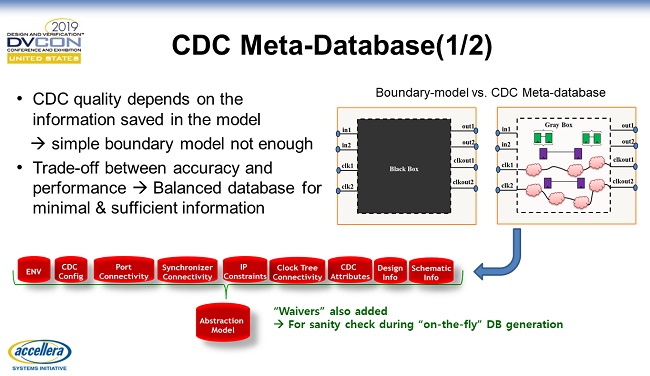
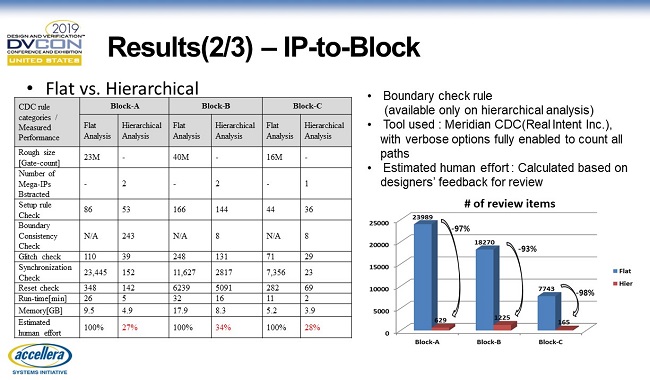
IP-Level Results: 95-98% Reduction in CDC Violations
Samsung presented the improvements they saw from implementing the three-level hierarchical CDC methodology for a few of their most complicated blocks.
They were able to achieve a 95% to 98% reduction in the number of CDC violations that their designers had to review.
The estimated reduction in effort was around 70% for the first level. Thus, a CDC sign off effort using a traditional flat methodology that used to take 10 days could be expected to take only take 3 days with the hierarchical methodology.
SoC-Level Result: User Effort Reduced by 60% to 70%
Samsung saw a similar reduction at the SoC sign-off level, with 60% to 70% savings in user effort.
They gained an additional benefit: Since flat level runs required a very high memory machine, the engineers’ CPU and wait time for getting access to the high memory machine was much longer.
In contrast, because they now were able to run the hierarchical flow on a lower memory machine, they eliminated the need for users to wait for the higher memory machines to become available.
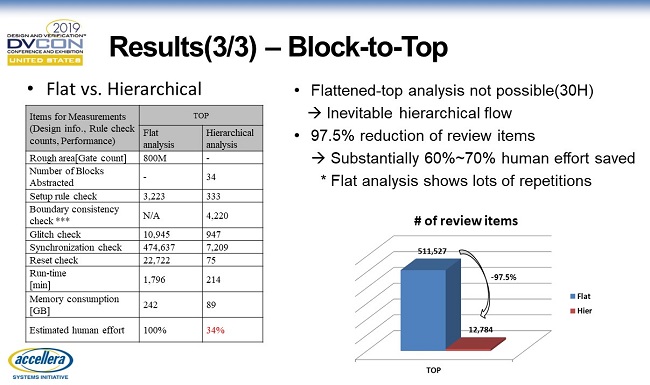
Conclusion: Accelerated CDC Sign-Off with Reduced Engineering Time
In summary, the number of CDC violations was becoming a signification problem for Samsung’s premium SoC CDC sign-off methodology.
Moving from a flat CDC sign-off approach to a hierarchical CDC sign-off methodology with Meridian CDC allowed them to achieve significant savings in the user effort required.
Additionally, it enabled Samsung to accelerate their sign-off process timetable.

